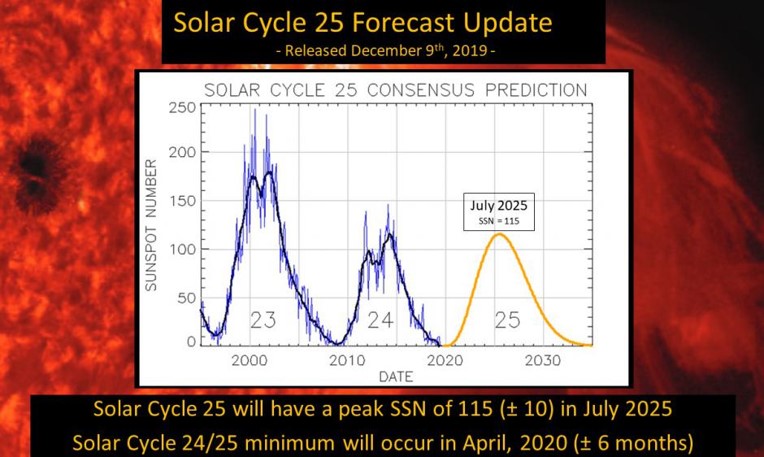On 24 December, 2 sunspot regions of the new solar cycle (SC25) were visible on the solar disk at the same time. NOAA 2753, located in the southeast quadrant near latitude -30 degrees, developed during the afternoon hours of 23 December. NOAA 2754 located in the northwest quadrant near latitude +25 degrees, developed during the morning hours of 24 December. SDO imagery shows the Sun on 24 December, with a white light image on the left and a magnetogram on the right. The high latitude of these sunspot regions as well as their magnetic polarity leave no doubt: Both groups belong to the new solar cycle 25. Both sunspot regions are currently (late on 24 December) still visible as small bipolar groups.

Also the solar telescopes of the Uccle Solar Equatorial Table (USET - http://www.sidc.be/uset/ ) recorded the groups. Underneath an image taken on 24 December in the CaIIK line (a line in the blue end of the solar spectrum). The appearance of these groups halt a period of spotless days that started on 14 November (preliminary SILSO data). It is the longest stretch of spotless days since 1996 (see last week's STCE Newsitem at http://www.stce.be/news/466/welcome.html ).

Earlier this month, the international Solar Cycle 25 forecast panel released an updated prediction on the start and strength of the new solar cycle (source: NOAA/SWPC at https://www.swpc.noaa.gov/news/solar-cycle-25-forecast-update ). SC25 is predicted to start in April 2020 (+/- 6 months) and to peak in July 2025 (+/- 8 months) with a maximum smoothed monthly sunspot number of 115 (+/- 10), making its amplitude very similar to that of the previous SC24.






